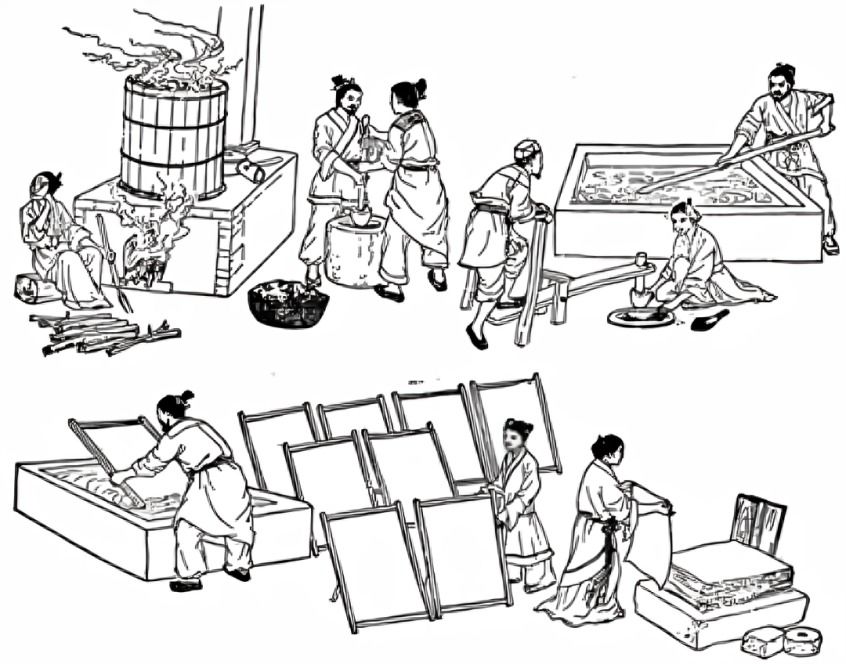
“
Paper is a remarkable material with diverse uses and a rich history. This article highlights 20 amazing facts about paper, illustrating its significance from ancient texts to modern technology. Delve into these facts to better appreciate how the paper has evolved and its impact on various fields. Its versatility and importance make it a fascinating subject.1
1
”

Paper production began in China nearly 2,000 years ago, making the Chinese the first to produce paper by hand. This ancient innovation revolutionized communication and record-keeping globally.
The oldest surviving trace of papyrus, a precursor to paper, dates back to 3000 BC in Egypt. This plant-based material was used for writing and documenting in ancient civilizations. 1
Watermarks were first used in paper production in 13th century Italy, serving as a tool for identifying the manufacturer and preventing forgery. This practice continues in some forms of currency and legal documents today.2
Recycling one ton of paper can save 17 trees from being cut down. This simple act of recycling reduces deforestation and helps preserve vital ecosystems.3
Paper was introduced to Europe through Arab traders, who learned the craft from the Chinese. This exchange helped spread paper technology throughout the world, fueling global literacy and record-keeping. 4
The largest producers of paper by quantity are the US and Canada, followed by Finland, Japan, and Sweden. These countries dominate the paper industry, supplying a significant portion of the world’s paper. 5
For every ton of paper produced, approximately 380 gallons of oil are consumed. This demonstrates the heavy reliance on natural resources in the papermaking process, adding to its environmental impact. 6
As of 2011, China became the largest paper producer globally, with a 24.9% market share. The US follows with an 18.8% share, making them both major players in the industry. 7
A single document is photocopied an average of 19 times during its lifespan. This shows the high demand for paper in office environments, contributing to significant paper consumption and waste over time. 8
The machine that extracts and prepares tree fibers for papermaking is called the Hollander. Invented in the 17th century, it significantly improved the efficiency of the papermaking process. 9

Paper can be classified into seven main types: printing, writing, drawing, wrapping, handmade, blotting, and specialty paper. Each type serves unique purposes, from everyday office use to artistic and packaging needs.
In 1999, the average American came into contact with approximately 354 kilograms of paper. This statistic reflects the high paper consumption in the US, driven by commercial, educational, and personal use. 10
The city of Phoenix, USA, collects around 100,000 tons of recycled material annually, 75% of which is paper. This recycling effort helps divert large amounts of paper waste from landfills. 11
It takes 324 liters of water to produce just 1 kilogram of paper. Water-intensive processes make papermaking a resource-heavy industry, emphasizing the need for more sustainable production methods. 12
Over 199 tons of paper are produced globally every 15 seconds. This staggering rate highlights the vast scale of paper production needed to meet global demand in industries like packaging, publishing, and printing. 13
Toilet paper was first produced in China in the late 9th century, long before it became a staple in the modern world. This innovation marked an important development in hygiene products. 14
Every year, junk mail delivery is equivalent to the destruction of 100 million trees. This enormous waste underscores the environmental impact of unsolicited paper-based advertising campaigns. 15
An average office worker uses about 10,000 sheets of paper annually, and nearly 6,800 of those sheets are wasted. This points to inefficient use of resources and the potential for reducing waste through digital alternatives. 16
It takes about 10 liters of water to make a single sheet of A4 paper. This reflects the large-scale environmental costs involved in producing even small amounts of paper.17
Around 37% of paper pulp in the United States comes from recycled paper. This recycling effort helps reduce the need for raw materials and minimizes deforestation. 18


